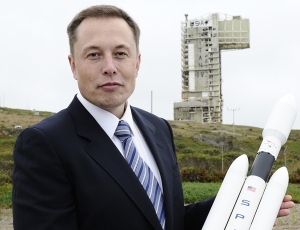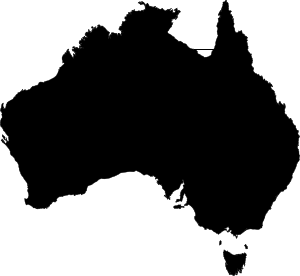 UPDATE: Heat waves and broken records. This report could have been written right now. However, it is was produced by our Bureau of Meteorology exactly one year ago! Take a look at this report produced for The Conversation in Jan 2013. Welcome to the new norm! Any one for cricket?
UPDATE: Heat waves and broken records. This report could have been written right now. However, it is was produced by our Bureau of Meteorology exactly one year ago! Take a look at this report produced for The Conversation in Jan 2013. Welcome to the new norm! Any one for cricket?
Science with a Smile:) Could Rhubarb Revolutionize Renewable Energy ?
Flow batteries are rechargeable devices based on specific chemicals in liquids separated by a membrane. They hold the key to cheap energy storage, especially if their dependence on expensive metals such as platinum and vanadium is reduced. Enter organic compounds called quinones. Quinones are central to electron transport in photosynthesis (plastoquinone, phylloquinone), and aerobic respiration (ubiquinone). A discovery by Harvard biochemists suggests that quinones similar to those found in rhubarb may unlock the development of cheap flow batteries.
Solar Power Craze on Wall St. Propels Start-Up
 Big changes are beginning to stir in solar energy. Heavy hitters such as Elon Musk (founder of SpaceX, Tesla Motors and PayPal) continue to see opportunities to transform the world through business excellence. And those insights are catching on on Wall Street. SolarCity is not simply a way to sell solar systems, it is a way to sell the energy itself, making “SolarCity almost like a newfangled utility”. Diane Cardwell and Julie Creswelljan wrote more on this innovation and the appeal it is generating in the New York Times last week. Continue reading
Big changes are beginning to stir in solar energy. Heavy hitters such as Elon Musk (founder of SpaceX, Tesla Motors and PayPal) continue to see opportunities to transform the world through business excellence. And those insights are catching on on Wall Street. SolarCity is not simply a way to sell solar systems, it is a way to sell the energy itself, making “SolarCity almost like a newfangled utility”. Diane Cardwell and Julie Creswelljan wrote more on this innovation and the appeal it is generating in the New York Times last week. Continue reading
Want to know more about global change and coastal marine ecosystems?
The University of Queensland has opened a free on-line course (1-2 year University level – http://bit.ly/JEnRkV ) on Tropical Coastal Ecosystems and Global Change as part of the edX partnership with Harvard and MIT.
This exciting course will introduce the major tropical coastal ecosystems (principally coral reefs, mangroves, sea grass meadows) and will explore the problems and solutions that these critical systems face.
The lecturers include Professors Hugh Possingham, Sophie Dove, Catherine Lovelock, Stuart Phinn and myself, with contributions from Drs Dorothea Bender, Ruth Reef, and Chris Roelfsema.
The course starts on April 28. To find out more and register, go to http://bit.ly/JEnRkV
Another record year for Australia
Yet another record passes. Not only has Australia signalled the go-ahead for the world’s largest coal ports (Abbot Point), it will finish the year with 2013 being its hottest year ever. Peter Hannam from the SMH puts it all together for us!
 Happy New Year!
Happy New Year!
Peter Hannam, SMH, ENVIRONMENT EDITOR
2013 will go down as the year that registered Australia’s hottest day, month, season, 12-month period – and, by December 31, the hottest calendar year. Weather geeks have watched records tumble. These tallies include obscure ones, such as the latest autumn day above 45C (Western Australia’s Onslow Airport at 45.6C on March 21), the hottest winter’s day nationally (29.92C , August 31), and even Wednesday this week, with the hottest-ever 9am reading (44.6C, at Eyre weather station near the WA-South Australian border). Continue reading
“I Got it Wrong on Climate Change—it’s Far, Far Worse”
By Daniel Politi, Slate, Posted Sunday, Jan. 27, 2013, at 11:11 AM ET
Climate Change Given Prominence in Obama’s Address
 By RICHARD W. STEVENSON and JOHN M. BRODER, New York Times, Jan 21 2012
By RICHARD W. STEVENSON and JOHN M. BRODER, New York Times, Jan 21 2012
¶WASHINGTON — President Obama made addressing climate change the most prominent policy vow of his second Inaugural Address on Monday, setting in motion what Democrats say will be a deliberately paced but aggressive campaign built around the use of his executive powers to sidestep Congressional opposition.
¶“We will respond to the threat of climate change, knowing that failure to do so would betray our children and future generations,” Mr. Obama said, at the start of eight full sentences on the subject, more than he devoted to any other specific area. “Some may still deny the overwhelming judgment of science, but none can avoid the devastating impact of raging fires, and crippling drought, and more powerful storms.” Continue reading
What’s causing Australia’s heat wave?
By Neil Plummer (Assistant Director Climate Information Services at Australian Bureau of Meteorology), Blair Trewin (Climatologist, National Climate Centre at Australian Bureau of Meteorology), David Jones (Head of Climate Monitoring and Prediction Services at Australian Bureau of Meteorology), Karl Braganza (Manager, Climate Monitoring Section at Australian Bureau of Meteorology) and Rob Smalley (Climatologist at Australian Bureau of Meteorology)
Australia has started 2013 with a record-breaking heat wave that has lasted more than two weeks across many parts of the country. Temperatures have regularly gone above 48°C, with the highest recorded maximum of 49.6°C at Moomba in South Australia. The extreme conditions have been associated with a delayed onset of the Australian monsoon, and slow moving weather systems over the continent.
Australia has always experienced heat waves, and they are a normal part of most summers. However, the current event affecting much of inland Australia has definitely not been typical. Continue reading
HOW HEARTLAND LIED TO ME AND ILLEGALLY RECORDED THE LIES
by CINDY on MARCH 15, 2012 (repost)
4 a.m. Bali, December 2007, the first Tuesday of the two-week UN climate talks. My phone rings, waking me up. Blearily, and a little crossly, I answer it.
I was in Bali to run Greenpeace International’s media for the meeting. The caller was someone called “John” who said he was an intern for a US NGO that I had never heard of. It was a small NGO, he said, who couldn’t come to the meeting, but “john” asked me for a copy of the UNFCCC’s media list for the meeting. Continue reading
The Australian: Front page error, tiny second page correction.
Its a great strategy. Get it completely wrong in bold type on your front page, and then, when pushed, make a tiny, hard to notice correction at a later date!



